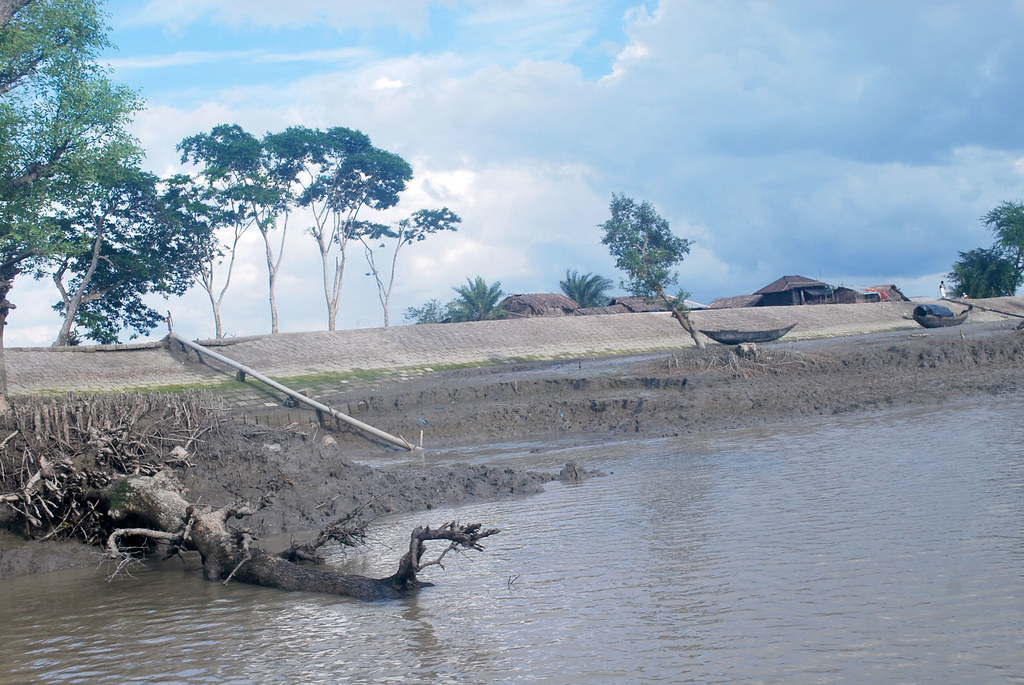Sundarbans: High salinity in groundwater forces people to buy drinking water, leave farming

- Country:
- India
Bibhas Mondal, a farmer of West Bengal’s Hasnabad gram panchayat, stopped agricultural work two years ago as Cyclone Aamphan of 2020 inundated the area in the Sundarban Biosphere Reserve with saline water making land unfit for cultivation.
Shikha Mondal, another resident of Khapukur village, purchases drinking water from a local treatment plant as tube wells only lift saline water for the same reason.
The salinity of the underground water they get from tube wells is 5 PSU (Practical Salinity Unit) while the ideal should be zero PSU, marine scientist Prof Abhijit Mitra told PTI.
Many people like Bibhas Mondal and Shikha Mondal who are facing the problems have raised these issues with Chief Minister Mamata Banerjee when she visited their village in North 24 Parganas district last week.
Banerjee directed the district authorities to address their problems. Her government also has plans to create a new district, Sundarbans, and the affected area will be included in it.
''We have no drinking water. There is also no (proper) water to cultivate our land. All land has been damaged by the saline water following Cyclone Aamphan in 2020. We want Mamata Banerjee to solve these problems.... We do not want anything else,'' Sikha Mondal told PTI.
The cyclone barrelled through the coastal districts of the state on May 21 two years ago, killing at least 12 people, uprooting thousands of trees, blowing up shanties and swamping low-lying areas.
The villagers also have to buy 20 litres of water for Rs 10 from the treatment plant and a family has to shell out around Rs 1,500 a month for drinking water.
''The amount is high for us... it is not affordable. We want the administration to address this issue,'' Sikha Mondal said.
Some people in the village are forced to drink saline water. Consumption of such water for a long time is likely to bring a number of health issues.
As the land has become unfit for agriculture in Hasnabad, Bhowanipur and Barunhat blocks under Basirhat sub-division, many people are now trying their hand at shrimp farming for a living.
''We have no work now. The land has been spoiled by the saline water and we are now trying to earn by shrimp cultivation,'' Bibhas Mondal said.
Villagers stated that they have informed the matter to the local MLA, but there has been no help.
Mihir Adhikary, a local leader of the ruling Trinamool Congress, also talked about these problems faced by the people.
''We have been requesting the leaders to give us some respite, but there has been no response from anybody. The district administration has been doing nothing. Now, we have told Mamata Banerjee, and she has assured us of help,'' Bibhas Mondal told PTI.
''I've heard about your water-related problems. We are trying to solve it. We will connect all households in West Bengal with tap water by 2024,'' the chief minister said.
Banerjee who distributed saris and blankets among the villagers also said that the state government is working on a masterplan for the overall development of Sunderbans.
Some of the women even expressed unhappiness with Banerjee's gift of saris.
''What will I do with this sari? We need proper water to drink and cultivate the land. These are affecting our lives,'' a homemaker who did not wish to be identified told PTI.
Expressing concern over the issue, marine scientist Dr Abhijit Mitra said that the salinity in the water of the area is increasing since the early 1980s, especially in the central part of the Indian Sundarbans region.
The central sector of the Indian Sundarban biosphere reserve is hyper-saline. No freshwater discharge is coming from the upstream area and this part is receiving only the tidal water of the Bay of Bengal, the Calcutta University teacher said.
''The salinity in water in this zone has been increasing but the rise gained momentum since 2009 after Cyclone Aila hit West Bengal. Now, there is around 20gm of salt in one litre of water which is unthinkable for agriculture,” he said.
However, the situation in the eastern sector of the biosphere, in which the village falls, is not so bad.
Talking on condition of anonymity, a senior state government official said that the administration is working hard to address every issue in that area.
''Things are not that bad as it has been said. We are working very hard for the overall development of the Sundarbans and its surrounding area,'' the bureaucrat said.
Septuagenarian villager Sushil Mondal is keeping his fingers crossed.
''The chief minister has assured us of ending our water problems. Something will definitely happen,'' he said.
(This story has not been edited by Devdiscourse staff and is auto-generated from a syndicated feed.)
ALSO READ
Indian Navy hands over nine pirates to Mumbai Police
Tech Visionary, Venkata Mudumbai was honored with the International Achievers Award by the Indian Achievers’ Forum
'Modi ki guarantee' for Indian citizens residing abroad: EAM Jaishankar
No 'Shri' to be prefixed before names of Indian Coast Guard, defence forces officers: President Secretariat in RTI reply
Rajnath Singh releases Indian Army UN Journal -2024 theme of ‘Resilience and Adaptability’










